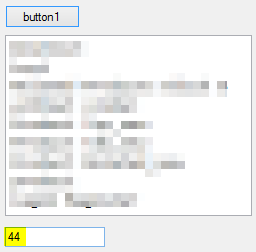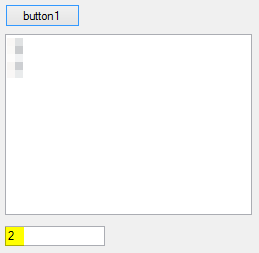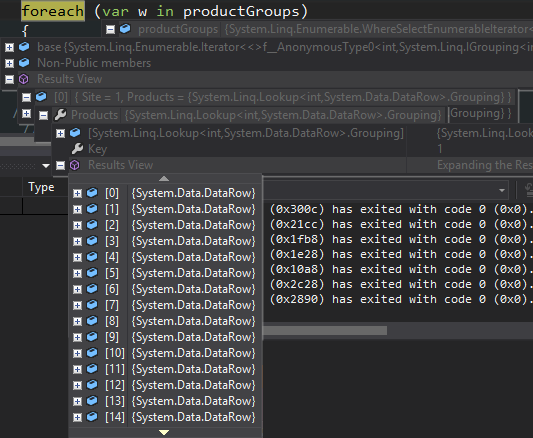reference
https://code.msdn.microsoft.com/101-LINQ-Samples-3fb9811b
https://msdn.microsoft.com/en-us/library/bb386921(v=vs.110).aspx
a function returns a datatable from dbase
LiNQ Example - Database to Enumerable - Select all records with order by descending

LiNQ Example - Database to Enumerable - Group By


this one returns all CMS_Tablets group by Site_ID (a foreign table, has just a two records)...

on each Site have products (a bunch of) datarows where these contains the SQL Table fields.
https://code.msdn.microsoft.com/101-LINQ-Samples-3fb9811b
https://msdn.microsoft.com/en-us/library/bb386921(v=vs.110).aspx
JavaScript:
CREATE TABLE [CMS_Tablets](
[Tablet_ID] [int] IDENTITY(1,1) NOT NULL,
[Tablet_Title] [nvarchar](50) NULL,
[Tablet_Type] [tinyint] NULL,
[Site_ID] [int] NOT NULL,
CONSTRAINT [PK_CMS_Tablets] PRIMARY KEY CLUSTEREDa function returns a datatable from dbase
JavaScript:
public DataTable GetDATATABLE(string SQLSTR)
{
SqlDataAdapter sqlAD = new SqlDataAdapter();
DataTable sqlSET = new DataTable();
SqlCommand sqlco = new SqlCommand();
try
{
sqlco.CommandText = SQLSTR;
sqlco.Connection = objConn;
sqlAD.SelectCommand = sqlco;
//sqlAD.MissingSchemaAction = MissingSchemaAction.AddWithKey;
sqlAD.Fill(sqlSET);
return sqlSET;
}
catch (Exception ex)
{
MessageBox.Show(ex.Message, "SQLClass - GetDATATABLE");
return null;
}
finally
{
sqlco.Dispose();
sqlAD.Dispose();
sqlSET.Dispose();
}
}LiNQ Example - Database to Enumerable - Select all records with order by descending

JavaScript:
//get an enumerable
IEnumerable<DataRow> dt = db.GetDATATABLE("select * from [CMS_Tablets] order by [Tablet_Title]").AsEnumerable();
var products =
from cust in dt
orderby cust.Field<string>("Tablet_Title") descending
where cust.Field<string>("Tablet_Title").IndexOf("ASUS") > -1
select cust;
//count items
txt_count.Text = products.Count().ToString();
//foreach item, print "Tablet_Title" field
foreach (DataRow w in products)
{
textBox1.Text += w["Tablet_Title"] + "\r\n";
}LiNQ Example - Database to Enumerable - Group By

JavaScript:
var productGroups =
from p in dt
group p by p.Field<int>("Site_ID") into g
select new { Site = g.Key, Products = g };
txt_count.Text = productGroups.Count().ToString();
foreach (var w in productGroups)
{
textBox1.Text += w.Products.FirstOrDefault().Field<int>("Site_ID") + "\r\n";
}
this one returns all CMS_Tablets group by Site_ID (a foreign table, has just a two records)...

on each Site have products (a bunch of) datarows where these contains the SQL Table fields.
JavaScript:
//(System.Data.DataSetExtensions.dll)
IEnumerable<DataRow> dt = db.GetDATATABLE("select * from [CMS_Tablets] order by [Tablet_Title]").AsEnumerable();
//(System.Core.dll)
IEnumerable<DataRow> rows = db.GetDATATABLE("select * from [CMS_Tablets] order by [Tablet_Title]").Rows.OfType<DataRow>();
//source http://stackoverflow.com/a/529843